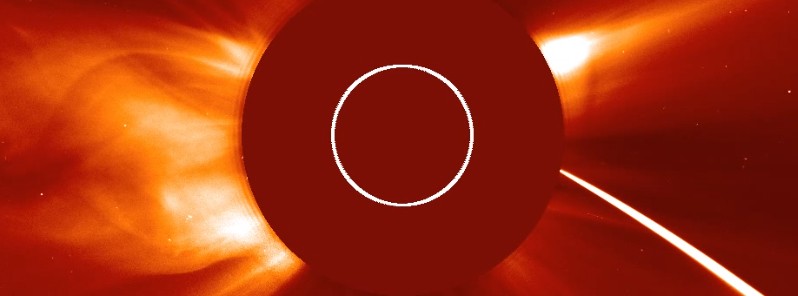Bright Kreutz sungrazer plunges into the Sun

A new Kreutz family sungrazing comet appeared in SOHO's LASCO C3 coronagraph imagery around 00:40 UTC on August 2, 2016.
The comet made its closest approach to the Sun around 05:15 UTC on August 4, becoming one of SOHO's top 10 brightest sungrazers. Its estimated speed at the end of the journey was 600 km/s.

Sungrazing comets have been observed for many hundreds of years, possibly even as far back as the year -371. It is speculated that a comet seen by Aristotle and Ephorus may have been a Kreutz sungrazer.
Space-based observatories began to detect them in 1979, but high-quality videos of their spectacular demise became available to the public only with the launch of SOHO spacecraft in 1995.
Named after Heinrich Kreutz who studied them in late 1880's and early 1890's, sungrazing comets are all part of a single comet which had broken up. It is probable that the original comet, and its fragments, have broken up repeatedly as they orbit the Sun with a period of about 800 years.
The brightest Kreutz comets observed by LASCO are believed to be no more than tens of meters in diameter.
According to Karl Battams, an astrophysicist and computational scientist based at the Naval Research Laboratory (NRL) in Washington DC, the comet observed from August 2 to 4 was one of the brightest Kreutz sungrazers we've seen over the past 21 years.
Featured image: ESA/NASA SOHO LASCO C2 – August 4, 2016

Commenting rules and guidelines
We value the thoughts and opinions of our readers and welcome healthy discussions on our website. In order to maintain a respectful and positive community, we ask that all commenters follow these rules.